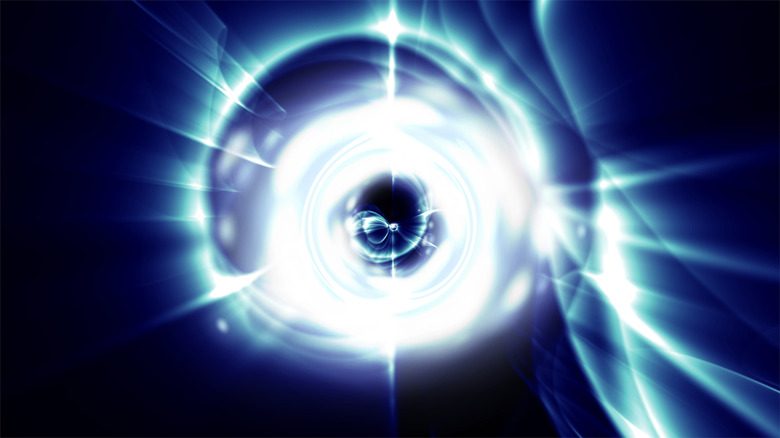Black Hole Myths
In movies, black holes are depicted as giant, swirling masses. In actuality, scientists aren't able to observe black holes directly, not even with x-ray or electromagnetic radiation. Scientists know black holes are there because of the way they interact with the matter around them. Black holes are still largely a mystery to science, creating a great deal of public interest and misconception.
Black Holes are not Empty
Black Holes are not Empty
Unlike their name, black holes are anything but holes. Black holes are some of the densest objects in the universe. If you packed a star 10 times as dense as the sun into New York City, you would get close to the density of a black hole. It is the great density of a black hole, rather than its fictitious emptiness, that sucks things in. Just as Earth has a gravitational pull on the moon because of its larger mass, a black hole has a similar pull on the things around it.
Black Holes are not Wormholes
Black Holes are not Wormholes
Unlike the science fiction popularized by the Star Trek series, black holes are not wormholes. Wormholes are said to be tunnels that connect distant parts of the universe. But if an object is sucked into a black hole by its extreme gravitational force it will not appear somewhere else in the universe. There is no evidence that wormholes exist at all, even independently of black holes, though Einstein's general relativity field equations predict their existence.
Black Holes Won't Suck in the Universe
Black Holes Won't Suck in the Universe
Black holes only absorb objects close to them. If the sun were a black hole, the Earth, 149,597,870 km (92.956 million miles) away, wouldn't change or be sucked in. Only objects within 3 km of the sun would be in danger if the sun suddenly became a black hole. It is true, however, that even light can't escape from a black hole once it goes in.
Any Star can Become a Black Hole
Any Star can Become a Black Hole
Black holes form when huge stars die and leave behind a super dense core. When our sun eventually fizzles out, however, it won't become a black hole — it is neither big enough nor dense enough. The smallest black hole that has been discovered is thought to be three times the size of the sun. There are only a few that small in existence. Most are at least 10 times the size of the sun, and some can be millions or billions of times bigger.
Cite This Article
MLA
MacGregor, Kelly. "Black Hole Myths" sciencing.com, https://www.sciencing.com/black-hole-myths-4897/. 24 April 2017.
APA
MacGregor, Kelly. (2017, April 24). Black Hole Myths. sciencing.com. Retrieved from https://www.sciencing.com/black-hole-myths-4897/
Chicago
MacGregor, Kelly. Black Hole Myths last modified March 24, 2022. https://www.sciencing.com/black-hole-myths-4897/
